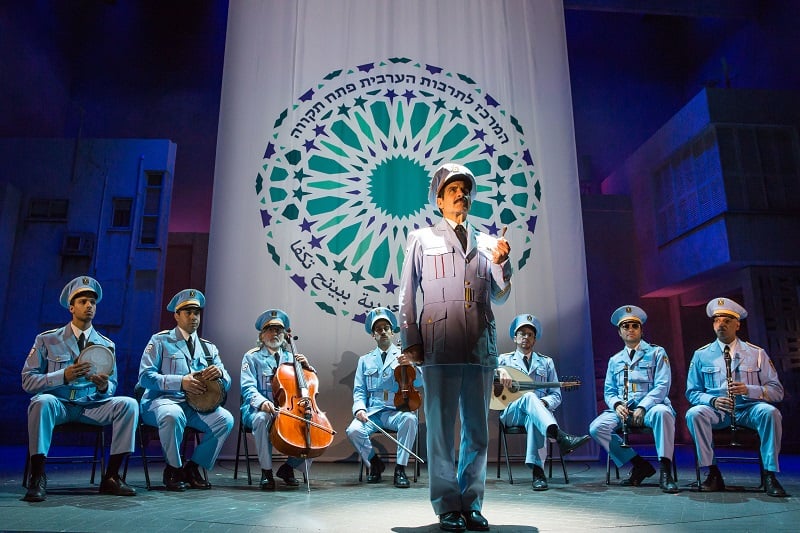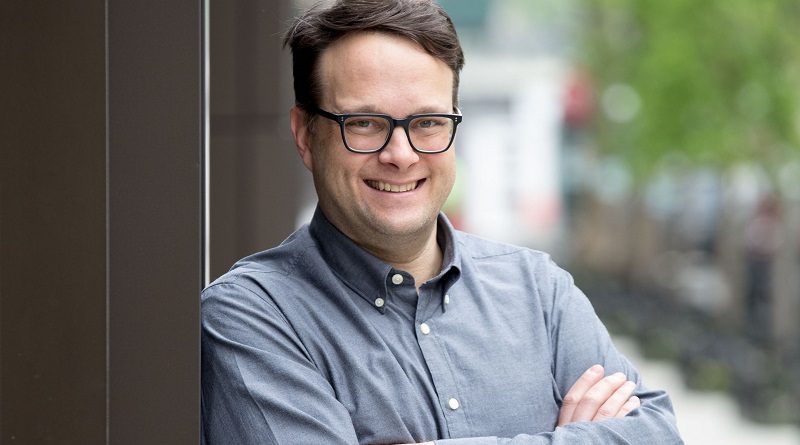Spotlight on Tyler Micoleau: Lighting Designer Edition
In Theatre Trip’s “Spotlight On” series, we are chatting with the most interesting and influential people in the theatre industry. And today we’re doing a special feature on Tyler Micoleau, a Tony-award-winning lighting designer in NYC!
Tyler Micoleau has designed the lighting for plays, operas, and musicals both regionally and internationally. You might best know him from his lighting for Broadway’s Be More Chill, or his Tony-award-winning lighting for The Band’s Visit.
What was it that inspired you to step into the theatre world? And what drew you to design?
“I’ve been involved backstage with some kind of live performance since middle school. In public high school I was exposed to professional theatre seeing plays at Maine’s only LORT regional theater Portland Stage Company. Seeing those productions taught me that one could actually have a job backstage.
But it wasn’t until my time at Bowdoin College, when I designed the sets and lights for several productions, that I was inspired to pursue a career in design.
I appealed to the college to let me create my own major in stage design, one that would allow me to take full advantage of the offerings of a small liberal-arts school. I studied dance and theater, but also music, art history, literature, even cultural anthropology.
Stage design was a pursuit of the Renaissance man – the historian, the poet, the architect, the musician, the scientist, the artist – all wrapped up in one package.”
So would you say that there is a particular set of skills or formal education that one should acquire before pursuing a career in lighting design?
“It should be no surprise given my statement above, that I firmly believe the best theatre education is a liberal arts education. I think given all the BFA and MFA programs out there, it’s very easy for a young person to fall into a trap of shutting themselves off from a more wholistic education, one that really teaches them how to learn.”
“There are hard skills to learn in order to pursue a career in lighting, but so many of those skills can be learned by assisting more established designers and simply by doing the work.”
“Without a doubt there are hard skills to learn in order to pursue a career in lighting, but so many of those skills can be learned by assisting more established designers and simply by doing the work. Make mistakes.
I do think MFA programs are useful for some people, as a means of doing all these things in a “safe” environment. But my path was one of working as an electrician, designing hundreds (literally) of downtown Off-Off Broadway shows, and touring as a lighting director for theatre and dance. [A tour lighting director is tasked with recreating the lighting designs of another lighting designer on the road: show after show, venue after venue. It’s a great way to gain experience supervising crews and focusing lights.]”

What’s the first thing that you generally consider before beginning the process of designing a new show? And how much does music play a role in the lighting design for musicals?
“The first things I consider are: what’s the story being told and what’s the space it’s being told in. I look at the structure of a script, how the scenes break down and rhythmically how do they transition from one to the next. If it’s a musical, I do something similar with the scenes and the songs. Furthermore, each song has its own structure and rhythms, and provides the emotional backbone to the narrative; the songs will give me information about color, composition and timing.”
Do you have any resources, designers, or artists that you tend to draw inspiration from?
“I definitely fall back on my knowledge of art, art history and architecture. But really photography is so accessible via media such as Tumblr, Pinterest and Instagram, and I’ll go to those sources first.
Having grown up and studied in Maine, I’m drawn to the natural world for much of my inspiration: sunlight, sky light; on trees, on architecture, on people. Living in Brooklyn, I still have access to trees, in parks and cemeteries, but my eyes are drawn to the more artificial lighting phenomena: street lights, architectural lighting, retail lighting. There’s a wide variety of remarkable interior spaces in New York City, and light is an important factor in how we see all of them.
I also draw inspiration from the work of other theatrical designers. I try to see as many shows as my schedule will allow (which sadly isn’t many). We all have different personalities and sensibilities, personal styles which make seeing another’s work worthwhile.”
What was it like designing the Tony Award winning lighting for The Band’s Visit? Were there any surprises or unexpected challenges along the way?
“I was very fortunate designing the lighting for The Band’s Visit, in so many ways.
It was my Broadway debut, so there was a whole level of newness to the process for me. Commercial Broadway theatre is a unique animal and operates differently from the non-profit Off-Broadway and Regional theatre: different budgeting process and pressures; strict Union labor; and very intense producer pressures.
With the help of a veteran Broadway designer, I put together an excellent and experienced team to help me navigate the new territory: an associate, an assistant, a programmer and a production electrician. I was in such good hands, it allowed me to concentrate on the knowledge I did have to confidently design a truly extraordinary piece of musical theatre.”

Are there any common myths or misconceptions about what you do as a lighting designer?
“There are common myths, but I don’t want to debunk them!
Everyone thinks they know about all about lighting – they live with light every day. But when pressed, they realize there’s some alchemy or magic that gets a designer from an idea to the lighting state onstage. That alchemy is of course a mysterious combination of physics, craft, visual sensitivity and decision making. But I don’t want to reveal the mystery. There’s power being perceived as a magician.”
What trends are you seeing pop up in lighting design at the moment?
“By far the biggest trend in lighting in my twenty-plus years as a theatrical designer has been the LED revolution. You probably have seen this in your own home lighting, where older light bulbs have been switched to more energy efficient ones, in the form of LED. That switch is happening in the theatre, but on a much larger and more far-reaching scale.
While energy efficiency was perhaps the driving force behind the switch, manufacturer experimentation with LED technology led to innovations that have changed the way lighting designers work, even how we see. LED lighting has opened new worlds of color rendering and mixing. The all familiar “gel” color media is on the verge of being a relic.”

Do you have any tips for staying productive and moving forward in your craft during these times of uncertainty and theatre shutdowns?
“I definitely struggle with moving forward as a lighting designer in this time of COVID. It’s difficult to find creative outlets that exercise all the same muscles as design. The key I think, is to stay inquisitive and to not stop looking. I’ve started dabbling in rendering both with pencil drawing and with 3D computer software. I’m also learning more about music by taking lessons on the electric bass.”
Is there any last advice you would like to give to the aspiring designers out there?
“I’ve compiled an ever-growing list of “Aspiring Wall Mottoes for the Young Designer”; I’ll include a couple here:”
“To make the perfect painting, first make your life perfect, then paint naturally.”
— Zen proverb
“Perfection is achieved not when there is nothing left to add, but when there is nothing left to take away.”
— Antoine de Saint-Exupéry (author of The Little Prince)
What did you think of this interview with Tyler Micoleau?
Are any of you working as or aspiring to be a lighting designer? If so, we would love to hear all about it in the comments below! And in in the meantime, you can check out even more of our interviews with inspiring people in the theatre industry!
Learn More:
* The featured photo of Tyler is by Bia Sampaio➝.
Want to stay in the loop with all things related to musical theatre?
Author: Stacy Karyn
Stacy Karyn is the founder of Theatre Trip, author of The Thespian’s Bucket List, and creator of The Cast Album List. She holds a BA in theatre, a TESOL drama certificate, and has worked and interned with Broadway and Off-Broadway theaters.



